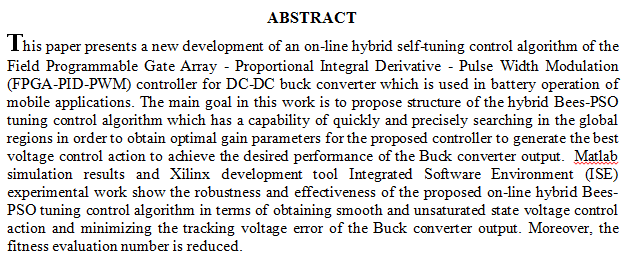
Cadmium oxide CdO thin films were prepared by successive ionic layer adsorption and reaction (SILAR) technique at varying number of dippings. The CdO thin films were prepared from a source material of Cadmium acetate and ammonium hydroxide solution deposited on glass substrate at 95℃. The prepared thin films were investigated by X-ray diffraction (XRD), Atomic force microscopy (AFM), Scanning Electron Microscopy (SEM), Fourier Transform Infrared (FTIR), and UV-Visible spectrometry. The XRD analysis reveals that the films were polycrystalline with cubic structure having preferential orientation along (1 1 1), (2 0 0), (2 2 0), and (3 1 1) planes. While the tests of the scanning electron microscopy and the atomic force mic
... Show MoreThe biological activities of some ternary nickel complexes with a Schiff base obtained from 4-dimethylaminobenzaldehyde and 2-aminophenol have been reported. The Schiff base ( HL1) acts as a primary ligand whereas, anthranilic acid ( HL2), 2-nitroaniline ( HL3), alanine ( HL4) and histidine ( HL5) act as secondary ligand or co-ligand. The anticancer activity of these compounds was studied against human colon carcinoma (HCT-116), human hepatocellular liver carcinoma (HEPG-2) and human breast carcinoma (MCF-7) cell lines. As per the results, the compounds were active against the cell lines. The antioxidant activity of the same compounds was evaluated using DPPH (1,1-diphenyl-2-picryl-hydrazyl) radical scavenging and compared with ascorbic aci
... Show More1-[4-(2-Hydroxy-4, 6-dimethyl-phenylazo)-phenol]-ethanone (HL1) and 2-(4-methoxy-phenylazo)-3, 5- dimethyl-phenol (HL2) were produced by combination the diazonium salts of amines with 3, 5- dimethylphenol. The geometry of azo compounds was resolved on the basis of (C.H.N) analyses, 1H and 13CNMR, FT-IR and UV-Vis spectroscopic mechanisms. Complexes of La (III) and Rh (III) have been performed and depicted. The formation of complexes has been identified by using elemental analysis, FTIR and UV-Vis spectroscopic process as well, conductivity molar quantifications. Nature of complexes produced have been studied obeyed mole ratio and continuous alteration ways, Beer's law followed through a concentration scope (1×10-4 - 3×10-4 M). High molar
... Show More1-[4-(4-Acetyl-2-hydroxy-phenylazo)-phenyl]-ethanone (L1) and 1-[3-Hydroxy-4(4-nitro-phenylazo)-phenyl]-ethanone (L2) were readied by combination the diazonium salts of amines with 3-hydroxyacetophenone. (C.H.N) analyses, infrared spectra, UV–vis electronic absorption spectra, 1H and 13CNMR spectral mechanisms are use to identified of the ligands. Complexes of Ni+2 and Cu+2 were performed as well depicted. The formation of complexes has been identified by using atomic absorption of flame, elemental analysis, infrared spectra and UV-Vis spectral process as well conductivity and magnetic quantifications. Nature of compounds produced have been studied obeyed the mole ratio and continuous contrast methods, Beer's law followed during a concent
... Show MoreIn this study, biodiesel was prepared from chicken fat via a transesterification reaction using Mussel shells as a catalyst. Pretreatment of chicken fat was carried out using non‐catalytic esterification to reduce the free fatty acid content from 36.28 to 0.96 mg KOH/g oil using an ethanol/ fat mole ratio equal to 115:1. In the transesterification reaction, the studied variables were methanol: oil mole ratio in the range of (6:1 ‐ 30:1), catalyst loading in the range of (9‐15) wt%, reaction temperature (55‐75 °C), and reaction time (1‐7) h. The heterogeneous alkaline catalyst was greenly synthesized from waste mussel shells throughout a calcin
... Show More (1)
(1)
 (1)
(1)
In this study, biodiesel was prepared from chicken fat via a transesterification reaction using Mussel shells as a catalyst. Pretreatment of chicken fat was carried out using non‐catalytic esterification to reduce the free fatty acid content from 36.28 to 0.96 mg KOH/g oil using an ethanol/ fat mole ratio equal to 115:1. In the transesterification reaction, the studied variables were methanol: oil mole ratio in the range of (6:1 ‐ 30:1), catalyst loading in the range of (9‐15) wt%, reaction temperature (55‐75 °C), and reaction time (1‐7) h. The heterogeneous alkaline catalyst was greenly synthesized from waste mussel shells throughout a calcin
... Show More (1)
(1)
 (1)
(1)
This study focused on the synthesis of chitosan-alginate (CH-ALg) nanoparticles by ionotropic gelation technique using sodium alginate and calcium chloride. The particle size of the synthesized nanoparticles was confirmed by atomic force microscope (AFM) and it was 61.9 nm. While the nature of functional groups present in chitosan nanoparticles was determined by FT-IR analysis. The antibacterial activity of chitosan-alginate was tested against multidrug resistance (MDR) gram- positive (Enterococcus faecalis) and gram-negative (Proteus mirabilis) bacteria. The results showed a significant effect against MDR isolates. The nanoparticles were loaded with the antibiotic doxycycline in order to improv
... Show More (20)
(20)
 (6)
(6)
Conducted Althilelat chemical models of crude oil back to the reservoir Fertile from the fields of Baghdad and Kut and models of crude oil back to the reservoir ??????? of Haklbe Tikrit and Baghdad were calculated their properties Alvezaúah Kalkthaqh and weight, quality and degree of August j (API) and know the quality Nfothma that was light or heavy and make the comparison between Alinvtin also conducted chemical analyzes of the two models of Almia associated with each of the oil above Almkmnin and measured Ktvthma and Zojithma and concentrations of some dissolved salts in them and clarify the relationship between the oil reservoir and water associated with oil fields...
This study expands the state of the art in studies that assess torsional retrofit of reinforced concrete (RC) multi-cell box girders with carbon fiber reinforced polymer (CFRP) strips. The torsional behavior of non-damaged and pre-damaged RC multi-cell box girder specimens externally retrofitted by CFRP strips was investigated through a series of laboratory experiments. It was found that retrofitting the pre-damaged specimens with CFRP strips increased the ultimate torsional capacity by more than 50% as compared to the un-damaged specimens subjected to equivalent retrofitting. This indicated that the retrofit has been less effective for the girder specimen that did not develop distortion beforehand as a result of pre-loading. From
... Show More (2)
(2)
